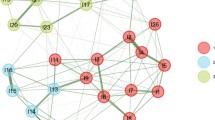Abstract
Clinical assessment of domestic violence has traditionally relied on self-report methods of data collection, using structured interviews and lengthy questionnaires such as the MMPI-2. However, in certain situations such as court-ordered domestic violence evaluations, information obtained through self-report methods may be tainted because of willful impression management on the part of the client. The purpose of the current study was to compare self-report response styles of individuals with varying levels of domestic violence potential in order to determine whether the measures used could accurately differentiate between the groups.
Individuals who were currently involved in child custody cases were court ordered to an anger assessment clinic to determine their potential for domestic violence because they had been accused of domestic abuse. Participants were classified into three groups: (a) documented domestic violence (n = 12), (b) high risk for domestic violence (n = 16), and (c) minimal risk for domestic violence (n = 24), and completed several measures of personality including the MMPI-2.
Results indicated that the majority of individuals from all three groups used impression management techniques in an attempt to enhance their appearance. However, documented perpetrators of domestic violence still tended to score higher on specific measures of aggression despite their attempts to minimize. These results imply that individuals accused of domestic violence may employ impression management regardless of their guilt or innocence; therefore, the evaluation process should not disproportionately rely on self-reports.
Similar content being viewed by others
References
BUSS, A. H., & PERRY, M. (1992). The aggression questionnaire. Journal of Personality and Social Psychology, 63, 452–459.
BUTCHER, J., DAHLSTROM, W., GRAHAM, J., TELLEGEN, A., & KAEMMER, B. (1989). Minnesota Multiphasic Personality Inventory-2 (MMPI-2): Manual for administration and scoring. Minneapolis: University of Minnesota Press.
COCCARO, E. F., BERMAN, M. E., & KAVOUSSI, R. J. (1997). Assessment of life history aggression: Development and psychometric characteristics. Psychiatry Research, 73, 147–157.
CONNERS, C. K. (1995). Cpt: Conners’ Continuous Performance Test. Toronto: Multi-Health Systems, Inc.
CRAIG, R. J. (2003). Use of the Millon Clinical Multiaxial Inventory in the psychological assessment of domestic violence. Aggression and Violent Behavior, 8, 235–243.
ELSE, L. T., WONDERLLCH, S. A., BEATTY, W. W., CHRISTIE, D. W., & STATON, R. D. (1993). Personality characteristics of men who physically abuse women. Hospital and Community Psychiatry, 44, 54–58.
EYSENCK, H. J., & EYSENCK, S. B. G. (1975). Eysenck Personality Questionnaire (Junior and Adult), Manual. San Diego: Educational and Industrial Testing Services.
GREENE, R. L. (2000). The Mmpi-2: An Interpretive Manual (2nd ed.) Boston: Allyn & Bacon.
HEATON, R. K., CHELUNE, G. J., TALLEY, J. L., KAY, G. G., & CURTIS, G. (1993). Wisconsin Card Sorting Test Manual: Revised and expanded. Odessa, FL: Psychological Assessment Resources, Inc.
LANGHINRICHSEN-ROHLING, J., HUSS, M. T., & RAMSEY, S. (2000). The clinical utility of batterer typologies. Journal of Family Violence, 15, 37–54.
LEZAK, M. D. (1995). Neuropsychological assessment (3rd ed.). New York: Oxford University Press.
MCBURNETT, K., KERCKHOFF, C., CAPASSO, L., PFIFFNER, L. J., RATHOUZ, P. J., MCCORD, M., & HARRIS, S. M. (2001). Antisocial personality, substance abuse, and exposure to parental violence in males referred for domestic violence. Violence and Victims, 16, 491–506.
O’DOUGHERTY, M., NUECHTERLEIN, K. H., & DREW, B. (1984). Hyperactive and hypoxic children: Signal detection, sustained attention, and behavior. Journal of Abnormal Psychology, 93, 178–191.
PATTON, J. H., STANFORD, M. S., & BARRATT, E. S. (1995). Factor structure of the Barratt Impulsiveness Scale. Journal of Clinical and Consulting Psychology, 51, 768–774.
REITAN, R. M. (1958). Validity of the Trail Making Test as an indication of organiC brain damage. Perceptual and Motor Skills, 8, 271–276.
RUFF, R. M., LIGHT, R. H., & EVANS, R. W. (1987). The Ruff Figural Fluency Test: A normative study with adults. Developmental Neuropsychology, 3, 37–52.
SIEGEL, J. C. (1996). Traditional MMPI-2 validity indicators and initial presentation in custody evaluations. American Journal of Forensic Psychology, 14, 55–63.
SPIELBERGER, C. D. (1996). State-Trait Anger Expression Inventory, Manual. Odessa, FL: Psychological Assessment Resources.
STANFORD, M. S., GREVE, K. W., & GERSTLE, J. E. (1997). Neuropsychological correlates of self-reported impulsive aggression in a college sample. Personality and Individual Differences, 23, 961–965.
TWEED, R. G., & DUTTON, D. G. (1998). A comparison of impulsive and instrumental subgroups of batterers. Violence and Victims, 13, 217–230.
Author information
Authors and Affiliations
Corresponding author
Rights and permissions
About this article
Cite this article
Helfritz, L.E., Stanford, M.S., Conklin, S.M. et al. Usefulness of Self-Report Instruments in Assessing Men Accused of Domestic Violence. Psychol Rec 56, 171–180 (2006). https://doi.org/10.1007/BF03395542
Published:
Issue Date:
DOI: https://doi.org/10.1007/BF03395542




